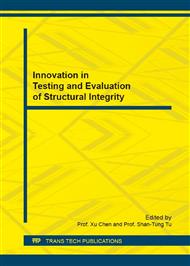p.384
p.389
p.394
p.399
p.405
p.410
p.419
p.425
p.431
Semi-Open Thermal Protection Scheme of Electronics in Nuclear Rescue Robot
Abstract:
Thermal management of electronics is quite important for safe operation of nuclear rescue robot. However, the ambient temperature of the nuclear robot in the site of nuclear accident will suffer an alternation between ordinary and elevated temperature. Traditional phase change material (PCM) based closed scheme for thermal protection is not suitable due to the capacity limitation of PCM. Open scheme with forced air cooling or water cooling is not acceptable either, because it cannot operate in high temperature. Therefore, a semi-open thermal control scheme is proposed by using silica aerogel for heat insulation, PCM for heat absorption, and Nickel-titanium alloy spring as temperature switch. An investigation on different ambient temperature, laying angle, melting point of PCM and heat power is conducted. The results showed that, compared with the PCM-based closed scheme, our design can provide 19.23% prolonged safe working hours, which can improve the reliability of electronic devices.
Info:
Periodical:
Pages:
405-409
Citation:
Online since:
September 2016
Authors:
Price:
Сopyright:
© 2017 Trans Tech Publications Ltd. All Rights Reserved
Share:
Citation:


